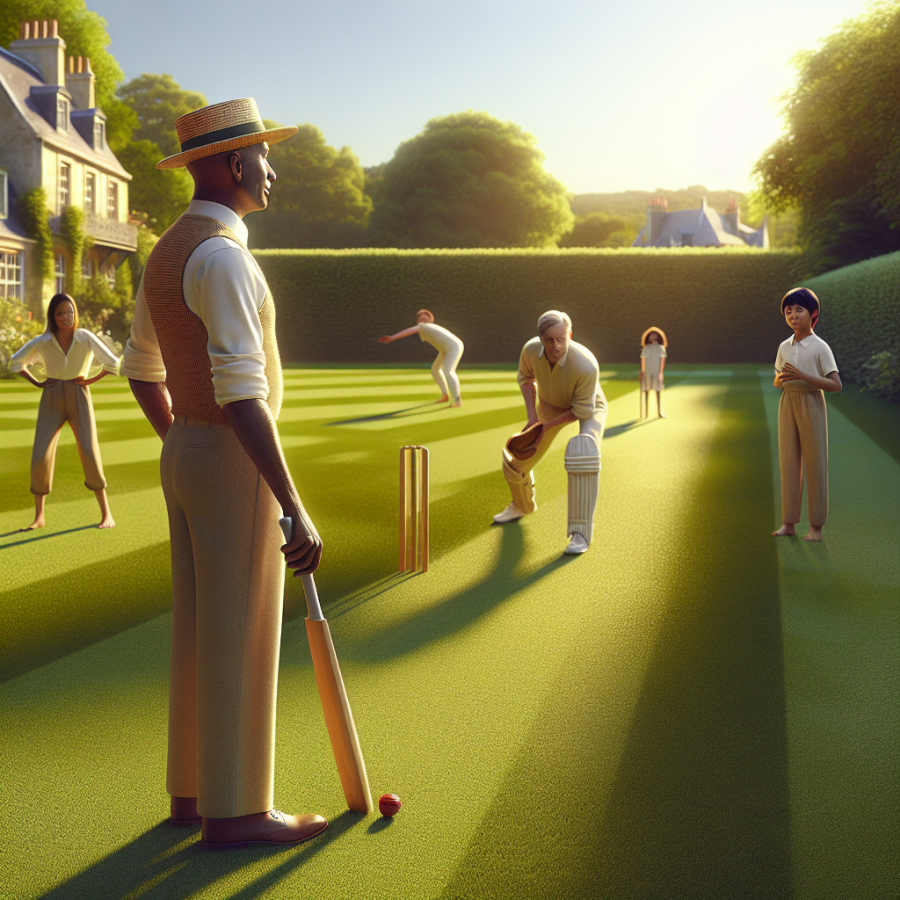The Charm of French Cricket in Family Gatherings and Social Events
French cricket, despite its deceptive simplicity, has a peculiar charm that has made it a staple at family gatherings and social events, enchanting participants across generations. This charming game does not require a dedicated pitch or elaborate gear, making it an ideal choice for casual sport in a variety of outdoor settings. It is the inclusivity of French cricket that truly sets it apart; with minimal rules and a focus on fun, individuals of all ages and abilities can partake in the game, making it a unifying activity that can draw families closer together.
At the heart of French cricket is its ability to turn any garden space into an arena for laughter, competition, and camaraderie. Typically played with a light bat and a rubber ball, the batter stands with feet planted, ready to defend their legs from being struck. The 'fielders' encircle the batter, eager to catch the ball or target the legs, encouraging jovial banter and light-hearted competition. This circular arrangement fosters a sense of inclusion – everyone is part of the game, there are no distant outfielders, and action is consistent for all players, ensuring that no one is left on the sidelines.
The rules of French cricket are malleable, and this adaptability is another aspect of its charm. It allows for adjustments based on available space, number of participants, and player skill levels, ensuring everyone can participate. In addition, as there are no teams, players can join or leave without disrupting the flow of play. This flexibility is particularly beneficial as it invites both younger children to join their elders in play, as well as enabling seniors to take part at their own pace.
During social events, French cricket acts as an icebreaker, engaging guests through its interactive and often amusing gameplay. It prompts laughter, as inexperienced players learn the nuances and develop their own tactics, while seasoned players might display an unexpected flair or competently guide newcomers. The shift from fielder to batsman occurs swiftly, ensuring active engagement from every participant, and this rotation of roles keeps the energy levels high and the game endlessly entertaining.
Moreover, French cricket is rich in its capacity to create memories. With every family gathering or social event where it is played, a collection of shared experiences is built. Relatives reminisce about epic matches, and recount tales of surprising upsets or incredible catches from past events, often adding to the lore of the family’s history.
Read also:
The Ultimate Debate: Identifying Tennis' GOAT
Exploring the Rules and Equipment of French Cricket
As we delve into the unique and engaging world of French Cricket, it's essential to understand both the rules that govern the game and the minimal equipment required to play this timeless garden sport. Unlike traditional cricket, this variant has a simplicity that makes it accessible and enjoyable for players of various ages and skill levels.
**Rules of French Cricket**
French Cricket is notable for its informality and the ease with which it can be played in a confined space like a backyard. Central to gameplay is the batter, who stands with feet close together; their objective is to protect their lower legs from being hit by the ball. The main rules are as follows:
- The batter uses a cricket bat to defend their legs, from knees to the tops of the shoes. If the ball strikes this area, they are deemed 'out.'
- Fielders encircle the batter and can be positioned anywhere around them. They aim to hit the batter's legs below the knee with the ball.
- The bowler must throw underarm, and the ball must be aimed directly at the legs without bouncing. Overarm throws are not permitted.
- When the ball is hit, it becomes a 'live' ball, and fielders must retrieve and attempt to hit the batter's legs with it to score an 'out.' However, the batter cannot move their feet until the ball is in play.
- A batter can rotate on the spot to protect their legs but is not allowed to lift their feet until the ball has been struck. This is to prevent them from jumping or running away from the ball.
- If the batter hits the ball and it is caught by a fielder before it touches the ground, the batter is out.
- There are no wickets, and scoring typically revolves around tallying the number of hits a batter makes before getting out. Another common method is to count the number of successful defenses (blocks) against the nominated target number before a leg hit occurs.
**Equipment of French Cricket**
The beauty of French Cricket is its minimal equipment needs, making it perfect for impromptu play in various settings. The essential items are:
- **Cricket Bat:** While any cricket bat will do, the game can also be played with any suitable bat-like object, as long as it serves the purpose of hitting the ball and can be handled with one hand if needed.
- **Ball:** A tennis ball is most commonly used due to its safety and accessibility.




